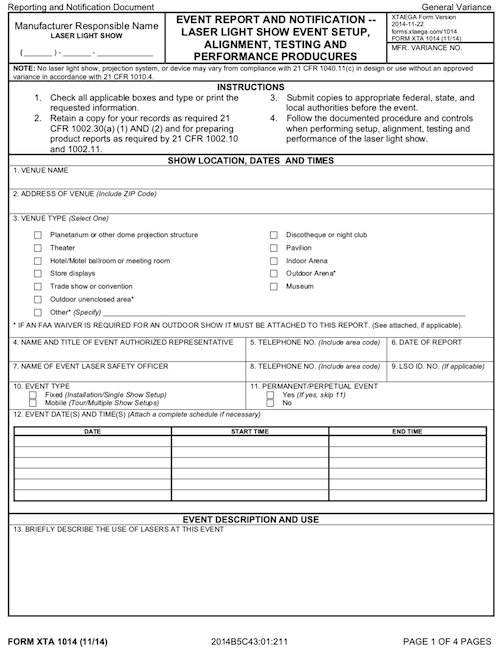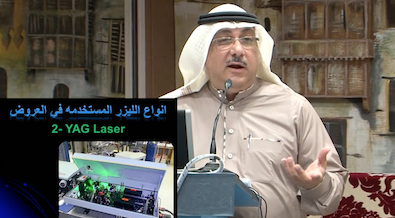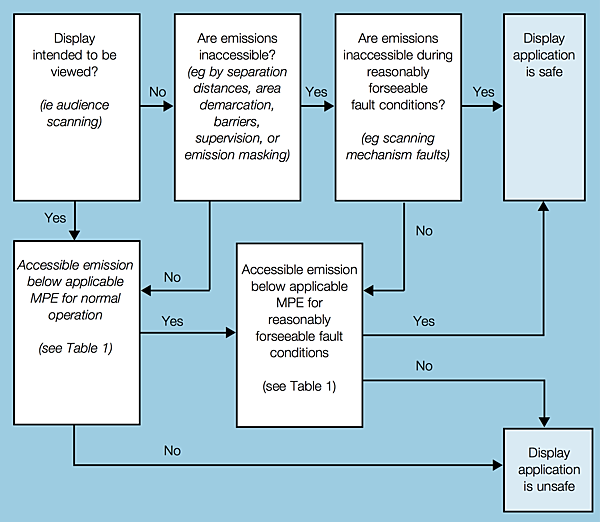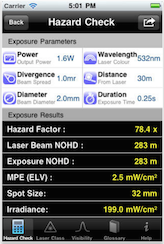LINKS AND RESOURCES
Safety info at ILDA
General ILDA safety information (“Safety is vital” page)Laser Show Safety - Basic Principles (a requirement for all ILDA Members)
ILDA’s Laser Safety Officer - Lasershows course
Laser projector specifications — what to look for, both for technology and for safety
For ILDA Members only
Available to current ILDA Members after they log in to ILDA’s Membership & Event Management websiteSkyzan laser safety software (Calculate NOHD, skin hazard, and aviation hazard distances. Supports complex multi-wavelength lasers).
Blank lasershow safety form (A Lasershow Health and Safety Document that helps in creating and filing information on risk assessments and pre-show checks)
Helpful forms and checklists
All-in-one Event Report and Notification — Laser Light Show Event Setup, Alignment, Testing and Performance Procedures. This provides information you can submit to authorities before the event, a checklist to follow before and during the event, and follow-up post-event review. Thanks to Brian Gonzalez of Xtaega for creating and freely distributing this four-page PDF file. If the direct link to his document does not work, here is a link to an earlier draft that should work.
Laser show checklists: Simple Checklist, Custom Checklist, and QC Safety Checklist Excel spreadsheet. Thanks to Roberta McHatton of Laser Safety Services for creating and freely distributing these checklists.
U.S. regulatory information
U.S. laser laws and regulations (federal level - FDA’s Center for Devices and Radiological Health or CDRH)December 2011 relaxation of certain FDA/CDRH reporting requirements
January 2013 changes to FDA/CDRH organization and enforcement staff
Rockwell Laser Industries: State Safety Contacts Laser displays in the US must also comply with the regulations of state governments. Rockwell, which offers laser safety products and training, has compiled a list of state government contacts.
U.S. FDA email update list
To sign up for the FDA’s “Lasers” email update list, which facilitates communication of laser industry-specific information, go to one of these four pages (here, or here, or here, or here) and scroll down to the bottom. Enter your email address and click the “Subscribe” button. That should sign you up. It is also possible to sign up for additional FDA email updates as shown in this screenshot (note that “Lasers” has already been subscribed):
U.S. import information
U.S. laws regarding importation of lasers and projectors used for demonstrations and laser showsCorrespondence between the FDA/CDRH and ILDA, late 2007
U.S. laser importation laws: Discussion by Chuck Maricle, April 2008
Standards
Some of these are national standards, and some are international. They may be useful even if there is no standards group in a particular country. Laserists may wish to purchase these to read and to have available on-site in their "show documents" binder along with any other safety and regulatory information.There are a number of laser safety standards in the ANSI Z136 series. These are the ones most important for laser show safe usage:
- ANSI Z136.1 Safe Use of Lasers. Overall laser safety for users.
- ANSI Z136.6 Safe Use of Lasers Outdoors. For outdoor show safety, to avoid illuminating aircraft.
- ANSI Z136.10 Safe Use of Lasers at Laser Shows and Trade Shows. This has not yet been issued, it is still in draft as of 2020. When it is finally issued (2021? 2022?) it will be very helpful for laserists.
The IEC 60825 series covers the safety of laser equipment. These are the ones most important for laser show equipment manufacturers and (secondarily) buyers:
- IEC 60825-1 Safety of Laser Products, Part 1, Equipment Classification and Requirements. Overall safety of laser products.
- IEC TR 60825-3 Safety of Laser Products, Part 3: Guidance for Laser Shows and Displays. "This part of IEC 60825, which is a technical report, gives guidance on the planning and design, set-up and conduct of laser displays and shows that make use of high power lasers."
The National Fire Protection Association has a "Standard for Laser Fire Protection". This is to prevent fires caused by high-powered lasers. Often in the U.S., local fire departments will be tasked with inspecting laser shows. This may be the only training or guidance the fire inspector has seen. So it can be good for you to know what is in it and to have a copy on-site.
Video in Arabic about laser lightshow safety
YouTube Laser Safety Video by ILDA Board Member Abdulwahab Baghdadi. May 2016 presentation to the Jeddah Chamber of Commerce, 70 minutes, primarily in Arabic.
Worldwide survey of various countries’ laws (especially as it relates to audience scanning)
Worldwide audience scanning lawsSafety of audience-scanned beams
How to do safe audience scanningAudience scanning tips
Scanning Audiences at Laser Shows: Theory, Practice and a Proposal A 31-page paper by Patrick Murphy and Greg Makhov, written in 2009 and updated since then. It describes audience scanning, discusses the very low number of injury reports and gives reasons why, and presents ILDA's proposal to allow greater laser power in return for banning very high power shows. (This paper is updated periodically. As of August 2012, it is version 2.8. If you need the original version presented at the March 2009 International Laser Safety Conference, contact ILDA.)
You can also download the audience scanning PowerPoint slides, which were used in a presentation at ILSC 2009 to summarize the paper for the assembled laser safety experts. (The slides have since been updated to add news and correct minor typos. If you need the exact ILSC 2009 slides, contact ILDA.)
Audience Scanning Guidelines, a report issued by an international panel of experts at the 1998 ILDA Conference. This is presented for historical purposes, since the "Scanning Audiences at Laser Shows" paper above is more up-to-date.
Art vs. Science This article by Greg Makhov addresses several issues regarding audience scanning, such as how laserists can accurately determine the safety of the effect. This article is an excellent introduction for the non-technical person, yet also contains a wealth of hard data for professionals.
Making Shows Safe and Enjoyable This article by William Benner provides detailed information on how to measure audience scanning effects to make sure international safety standards are met and audiences experience an enjoyable show.
Audience Scanning in the USA: Where is It? Audience scanning happens in Europe, Asia, and almost everywhere except the USA. This Oct. 2000 article by David Lytle discusses the history and future of audience scanning in America. (Note: In 2007, audience scanning using galvanometer scanners was allowed by U.S. regulators under specified conditions. At least two different companies received FDA/CDRH variances for audience scanning. Therefore, there may be elements of this article which are out of date.)
Camera and sensor damage information
Laser effects on cameras and camcordersAvoiding damage to cameras and video projectors (ILDA Members Only - password required)
Damage to camera sensors from lasers (Sacha Casken MSc thesis; excerpts published with permission of Cranfield University)
From the U.S. FDA
U.S. Food and Drug Administration - Center for Devices and Radiological Health The CDRH is responsible for regulating lasers, laser projectors and laser displays in the U.S. The webpage link is for their general “Radiation-Emitting Products” page. To find specific laser-related information, such as standards for laser projectors, use the “Search FDA” feature. This is because unfortunately, there does not seem to be a single CDRH page that lists links to laser-related information.
Laser Light Shows (contains the following: Description; Uses; Risks/Benefits; Laws, Regulations & Standards; Industry Guidance; Other Resources)
Notices to the Laser Industry (some of these are directly applicable to laser light shows)
From the United Kingdom
Public Health England U.K. public authority that works closely with laser display companies, venue managers, promoters and regulators to ensure safe laser shows in the UK and consistent standards worldwide.
PDF book: The radiation safety of lasers used for display purposes (web version of HSG95)
Lasers in nightclubs and discos (from Public Health England)
Audience Scanning in the UK: Legal Status (from LVR Optical)
Training courses for laser light show safety (from LVR Optical)
PLASA Laser Guidance booklet (guidance from U.K. production companies)

Lasershow safety diagram from U.K. Health and Safety Executive: The radiation safety of lasers used for display purposes
From Canada
Risk Assessment for Productions Safety Guideline for the Live Performance Industry in Ontario
An excellent overview of general production safety issues that should be considered and controlled. Also contains reference links, a sample schedule for doing risk assessment, and a sample risk assessment form.
Online laser safety calculators
For ILDA Members only: Skyzan laser safety software (Calculate NOHD, skin hazard, and aviation hazard distances. Supports complex multi-wavelength lasers). Sponsored for 2017-2018 by Brian Gonzalez of Xtaega.
Laser Hazard Distance Calculator: NOHD, ED50, and FAA visual interference distances. Has explanatory text to help in understanding how these are used and why they are important. Also has links to other online calculators at the bottom of the page.
Beam Diameter and Irradiance Calculator: Beam diameter, irradiance (top hat and Gaussian), NOHD. Also has explanatory text.
Laser safety apps
The three apps below are for Apple iOS devices. Check with your device’s app store to see if there are other laser safety apps available.
Laser Hazard Distance (shown above)— Can be used to help determine the safe viewing distance for direct exposure to visible laser beams. The user enters parameters for the output of laser beam and its natural spread, or divergence. Laser Hazard Distance then reports the distance (in meters or feet) that the Nominal Ocular Hazard Distance occurs. It also reports the spot size the laser beam expands to at this point.
Laser Show Safety — Users can specify laser output powers from 100mW through to 50W, over a range of different beam characteristics. Specify the distance the laser will be projecting over, and the exposure duration from a range of effects, and the laser hazard checker will calculate the exposure, and any hazard posed at the specified distance. If the distance is too short, the calculator will tell you at what distance exposure becomes safe. The divergence and power of the beam can be altered to establish the optimum settings to help ensure the safe viewing of laser effects against the MPE (Maximum Permissible Exposure) limits. In addition to the useful Laser Hazard Checker functionality the App comes complete with a range of reference tools, providing information on laser class, a useful laser show and safety documentation glossary, as well as an interactive wavelength visibility tool that shows you the color of any visible wavelength, along with information on its apparent brightness under bright-light and low-light conditions.
Laser Safety — Laser Safety is a handy reference tool detailing the hazard classifications for laser products and providing important definitions for those working with laser safety. The app also contains visibility tool that can be used to help determine the apparent brightness of laser beams based on their wavelength.
Other
LaserPointerSafety.com, a website co-sponsored by ILDA with information about laser pointer safety, and especially, the hazards of pointing lasers towards aircraft.
LaserSafetyFacts.com, a proposal for improved labeling that would be on consumer lasers, including mass-produced projectors. The labels would give detailed information about laser hazards and safe projector usage.
LaserIncidents.com has a list of databases and resources with laser incidents and accidents. This is for all types of incidents/accidents, so it can help give a comparison of problems with light show lasers versus problems with other types of lasers.
